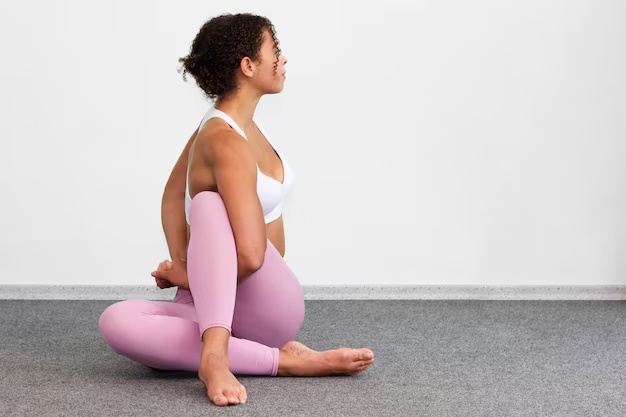Yoga is more than just a workout; it’s a holistic practice that unites the mind, body, and spirit. For centuries, yoga has been celebrated for its ability to enhance flexibility and promote relaxation. Whether you’re a beginner or an experienced practitioner, incorporating yoga into your routine can lead to profound physical and mental benefits. From reducing stress and tension to improving posture and mobility, yoga is an accessible and transformative practice for people of all ages and fitness levels.
In this guide, we’ll explore how yoga can improve flexibility and relaxation, provide practical tips for beginners, and showcase some of the best poses for achieving these benefits.
The Benefits of Yoga for Flexibility and Relaxation
Yoga offers a wide array of benefits, but its ability to increase flexibility and induce relaxation is unparalleled.
1. Improved Flexibility
Flexibility is essential for maintaining a healthy body and preventing injuries. Yoga stretches and elongates muscles, enhancing your range of motion over time.
- Key Benefits:
- Reduces stiffness and joint pain.
- Improves posture and alignment.
- Enhances athletic performance by loosening tight muscles.
2. Relaxation and Stress Reduction
The mindfulness and breathing techniques in yoga help calm the nervous system, reducing stress and promoting relaxation.
- Key Benefits:
- Lowers cortisol levels (the stress hormone).
- Improves sleep quality.
- Encourages a sense of inner peace and clarity.
How Yoga Enhances Flexibility
Yoga’s focus on slow, controlled movements and deep stretches makes it ideal for increasing flexibility.
Key Elements of Yoga for Flexibility
- Stretching Poses: Target specific muscle groups, improving elasticity.
- Dynamic Movements: Flowing sequences like Sun Salutations warm up the body and increase mobility.
- Consistency: Regular practice leads to gradual and sustainable improvements.
Yoga Poses for Flexibility
Here are some beginner-friendly yoga poses that effectively enhance flexibility:
| Pose Name | Target Areas | Instructions |
|---|---|---|
| Downward Dog (Adho Mukha Svanasana) | Hamstrings, calves, shoulders | Form an inverted “V” shape with your body. Press heels toward the floor and elongate the spine. |
| Cat-Cow Stretch (Marjaryasana-Bitilasana) | Spine, neck, shoulders | Alternate between arching and rounding your back while on all fours. |
| Seated Forward Bend (Paschimottanasana) | Hamstrings, lower back | Sit with legs extended, hinge at the hips, and reach toward your toes. |
| Butterfly Pose (Baddha Konasana) | Inner thighs, hips | Sit with soles of your feet together and gently press knees toward the floor. |
| Low Lunge (Anjaneyasana) | Hip flexors, thighs | Step one foot forward into a lunge position, lowering the back knee to the mat. |
The Science of Relaxation Through Yoga
Yoga helps activate the parasympathetic nervous system, which is responsible for the body’s “rest and digest” functions.
Techniques for Relaxation in Yoga
- Breathing Exercises (Pranayama): Control your breath to calm the mind and body.
- Example: Alternate Nostril Breathing (Nadi Shodhana).
- Meditation: Focus on mindfulness to reduce stress and increase relaxation.
- Example: Guided meditation during Savasana (Corpse Pose).
- Restorative Poses: Gentle, supported poses encourage deep relaxation.
- Example: Child’s Pose (Balasana) with a bolster for support.

Yoga Poses for Relaxation
The following poses are excellent for releasing tension and calming the mind:
| Pose Name | Benefits | Instructions |
|---|---|---|
| Child’s Pose (Balasana) | Relieves tension in the back and shoulders. | Sit on your heels, stretch arms forward, and rest your forehead on the mat. |
| Legs-Up-the-Wall Pose (Viparita Karani) | Reduces swelling in legs, calms the mind. | Lie on your back with legs elevated against a wall. |
| Corpse Pose (Savasana) | Promotes deep relaxation and stress relief. | Lie flat on your back with arms and legs relaxed. Focus on your breath. |
| Reclining Twist (Supta Matsyendrasana) | Eases tension in the spine and hips. | Lie on your back, twist one leg across your body while keeping shoulders on the mat. |
Tips for Beginners: Starting Your Yoga Journey
1. Set Realistic Goals
Don’t expect instant flexibility. Progress takes time, and consistency is key.
2. Focus on Breathing
Breathing deeply and evenly helps you move into poses more comfortably and enhances relaxation.
3. Use Props
Blocks, straps, and bolsters can provide support and make poses more accessible.
4. Start Slow
Begin with short sessions (10-15 minutes) and gradually increase the duration as you build confidence and endurance.
5. Practice Regularly
Even practicing 2-3 times a week can yield noticeable results in flexibility and stress reduction.
The Role of Yoga in Everyday Life
Yoga isn’t just a workout—it’s a lifestyle. Its principles can be integrated into your daily routine to promote overall well-being.
Incorporate Yoga Throughout the Day
- Morning Stretch: Start your day with a gentle Sun Salutation sequence.
- Midday Break: Use simple poses like Cat-Cow or Child’s Pose to relieve tension during work.
- Evening Relaxation: Wind down with restorative poses like Legs-Up-the-Wall before bedtime.
Conclusion: Embrace Yoga for a Balanced Life
Yoga for flexibility and relaxation is a powerful practice that benefits the body and mind. Whether you’re looking to touch your toes for the first time or seeking a way to de-stress after a long day, yoga provides tools for self-improvement and inner peace.
Start your journey today, one pose and one breath at a time. With patience and dedication, you’ll discover the transformative power of yoga and enjoy a healthier, more relaxed, and flexible you.
